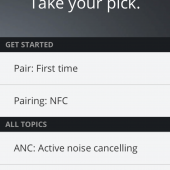

The client applications can range from Soft phone (SP) and Media Player (MP) modules to other third party applications that want to interface with devices directly. The Hub Session Manager will be responsible for handling all incoming client sessions. From the Plantronics SDK application developers also have access to the current connected device IDevice and can register for all the events exposed in the device manager SDK. Once successfully loaded, soft phone and media player modules will register with Hub and use the Hub ICallCommand, ICallEvents and ISessionManagerEvents interfaces to send commands and to receive events from Hub. Soft phone and media player components are required to implement a common interface IPlugin and, based on the Hub configuration XML (PURE.XML), Hub will dynamically load these modules as part of the process start up. The Hub Plug-in is the single entry point for all external application interactions. The function of each module is described in following sections.

The Hub SW stack is depicted above and has several functional modules such as Device Manager, Device Listener, Call manager, Session Manager etc. This requires your application or Plantronics integration component to target. NET support for COM Service is via an Interop Assembly called "". Languages supported today by Plantronics API: The SDK comes with 4 Plantronics APIs - which one do I use with my application? The diagram below shows how these APIs are exposed by the Plantronics software. You can add Plantronics headset support to your application by using one of the four APIs included in the Plantronics SDK: In addition to the features supported by non display devices, display devices support caller ID for incoming and outgoing calls, ability to make call and send DTMF digits while on a call.


 0 kommentar(er)
0 kommentar(er)
